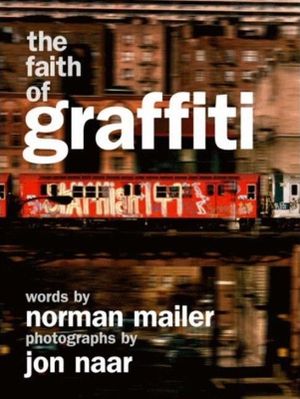January 17, 2020
From Gerald R. Lucas
The Faith of Graffiti Notes
1. “Life is an image”
Mailer, as the A-I, accepts the assignment to write about graffiti, interviews several retired graffiti artists, and discovers the importance of the name.
- Rather than take on the “chore” of journalism, NM assumes the persona of the “Aesthetic Investigator” (A-I)[1]
- Graffiti artists, like CAY 161, see themselves in the lineage of the great chapel painters of the Renaissance[2]
- Something spiritual about it: CAY 161 “has the power of his own belief.”
- “Life is an image”[3]
- The artist taps into something spiritual—tempting (or pleasing?) the gods[4]
- “The name is the faith of graffiti”[5]
- This refers to NM’s essay (cf, ¶s 6–8), and something more profound
- the name is a “hit,” linking graffiti to death[6]
- Poverty and crime are integral to the process?[9]
- friendship, too?[10]
Citations
- ↑ Mailer 1978, p. 134.
- ↑ Mailer 1978, ¶2.
- ↑ Mailer 1978, End of ¶2.
- ↑ Mailer 1978, ¶22, p. 140.
- ↑ Mailer 1978, ¶19, p. 139.
- ↑ Mailer 1978, p. 136.
- ↑ Mailer 1978, ¶9.
- ↑ Mailer 1978, ¶23, p. 138.
- ↑ Mailer 1978, pp. 136–37.
- ↑ Mailer 1978, ¶12, p. 138.
Works Cited
- Mailer, Norman (1978) [1974]. "The Faith of Graffiti". Pieces and Pontifications. Boston: Little, Brown. pp. 134–158.
